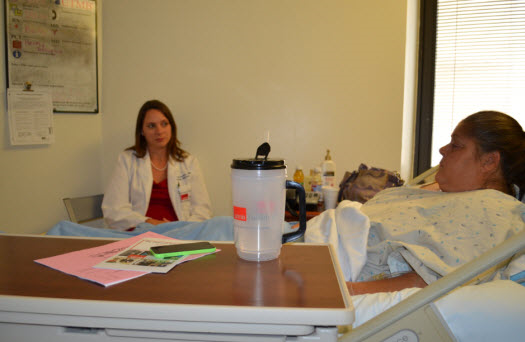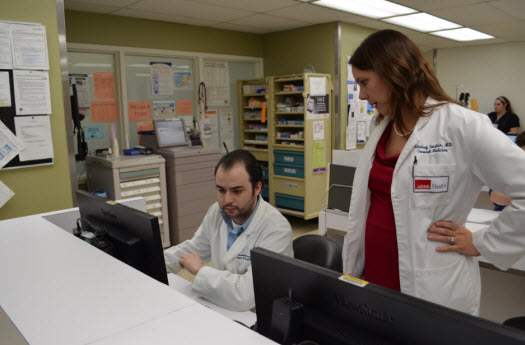
Remember the “good old days,” when your primary care doctor knew if you were admitted to the hospital? Dr. Randall Urban, UTMB’s chairman of the Department of Internal Medicine, does.
Urban and hospital executives are working to bring those days back.
“About 30 years ago, changes in hospital regulations altered the way we practice medicine,” said Urban.
While the new rules were intended to improve patient care, the end result was a fragmented internal medicine care model that affected how physicians spend their time in hospitals and clinics.
Like most health systems, UTMB’s internal medicine doctors were spending half of their day in the clinic and the other half in the hospital. If an internist was in the hospital the first half of the day, their clinical appointments were often delayed when their hospital rounds ran longer than expected. This resulted in extended wait times for clinic patients or rescheduled appointments.
“We began the redesign work by asking our patients how to improve the internal medicine inpatient service. They told us that the number of changes of providers while hospitalized and the lack of coordination of care between the inpatient team and their primary care physician was a real problem,” said Deborah McGrew, UTMB Health System vice president and chief operating officer.
“We listened to the patients’ perspective and designed a system based upon what they told us would better support their care.”
To resolve the challenges facing the department, faculty and executives made a series of improvements.
The department’s primary care providers were grouped into three “care teams” consisting of physicians, residents and nurses.
 As a result, Internal Medicine patients are always seen by either their primary care provider or, if unavailable, a member of their care team who is familiar with their medical history. The care teams stay in constant communication with one another regarding the care of their patients. Each care team takes care of their patients in the clinic and hospital setting. The department also optimized the faculty work schedules to facilitate their ability to practice in both settings.
As a result, Internal Medicine patients are always seen by either their primary care provider or, if unavailable, a member of their care team who is familiar with their medical history. The care teams stay in constant communication with one another regarding the care of their patients. Each care team takes care of their patients in the clinic and hospital setting. The department also optimized the faculty work schedules to facilitate their ability to practice in both settings.
“Since we’ve made this change I now know the majority of the patients I see in the hospital, because I’m assigned to them almost every time they’re admitted,” said Dr. Lindsay Sonstein, who played a major role in the department’s redesign as an associate professor and internal medicine physician at UTMB.
“Last year I only knew about 15 percent of the patients I saw in the hospital,” she added. “This is allowing me to build relationships and to stay abreast of changes in their health.”
Urban agreed, “Often if a patient was admitted to the hospital they would forget to notify the primary care provider. But now if a patient is admitted to the hospital or sees a different member of their care team in the clinic, we’re notifying one another.
“This helps us to follow patient outcomes better and improve our patients’ care,” he said.
“It makes a world of difference,” said patient Katherine Allen. She suffers from congestive heart failure and has made a few trips.jpg) to the hospital in recent months. “I feel more relaxed now when I come to the hospital because they all know my case,” she said.
to the hospital in recent months. “I feel more relaxed now when I come to the hospital because they all know my case,” she said.
The department also has added an attending physician [nocturnist] to the night shift, for patients admitted in the middle of the night. Previously, patients were treated by a resident physician and nurses, but had to wait until morning to be seen by an attending physician.
“The nocturnist allows us to speed up the patient’s care,” said Urban.
He credits the department’s redesign as a key factor in attracting new physicians to the practice. “We will be adding four to six new physicians this summer to allow us to expand access for our current patients and to continue to meet the growing needs of our community,” he said. “Physicians like this model of care.
“When you hear Dr. Callender [UTMB’s president] talk about the Road Ahead—this is it,” Urban said.
“We’re embodying the value goal of delivering high-quality outcomes that improve health care delivery. This is truly a transformational change.”
UTMB’s internal medicine doctors practice at UTMB’s Primary Care Pavilion clinic in Galveston, the Multispecialty Center in League City and the Community Adult Clinic in Texas City.